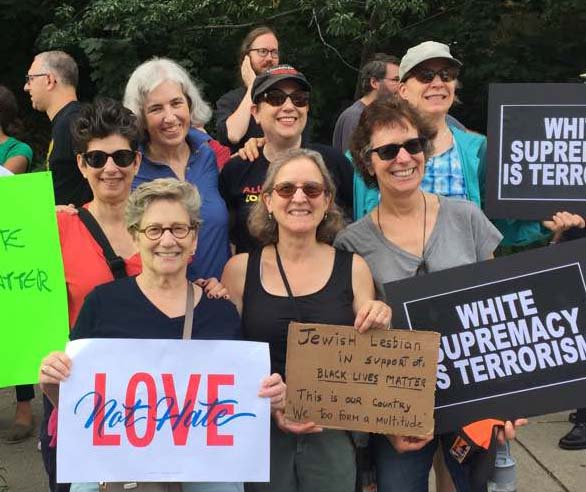
In 1973, when I was 21, I dropped out of college in New Jersey and moved to Boston. I didn’t have a clear plan or strong reason for the move. A girl I knew, on whom I was developing a huge crush, had relocated here; so had my boyfriend (life was complicated). The bookstores in Harvard Square stayed open until midnight—in contrast to the town I’d grown up in, which had no bookstores at all. It seemed like a cool place to be.
So I was new to the city, and living in my own world of discovering feminism and sharing collective apartments and working at odd jobs and coming out. I was not aware of Judge Arthur Garrity’s ruling in 1974 ordering students to be bused from neighborhood to neighborhood in order to desegregate the Boston Public Schools. I may not even have been aware of the violence that greeted the first black students to attend South Boston High, who were abused and threatened and pelted with rocks. Gradually, I learned. I remember being at a party at which half of the guests suddenly grabbed their coats and rushed out, someone having received a call that a black family in the South End was being attacked and needed defenders. These same progressives and others organized marches against the racist violence, but their outcry didn’t make much of an impression, in a city whose politics were dominated by ROAR (Restore Our Alienated Rights), the South Boston Marshals, and other antibusing groups.
I didn’t really understand what had happened in Boston until years later, after I did some reading about the city’s neighborhoods; the class, racial, and ethnic tensions that shaped them; and how they were changing because of redlining and gentrification—in particular, The Death of an American Jewish Community: A Tragedy of Good Intentions, by Hillel Levine; Common Ground: A Turbulent Decade in the Lives of Three American Families, by J. Anthony Lukas; and All Souls: A Family Story From Southie, by Michael Patrick MacDonald.
The contrast between then and last weekend—when more than 40,000 people (from within the city, its suburbs, and beyond) turned out on a hot, humid August day to protest a so-called Free Speech Rally on Boston Common that threatened to give a platform to racists, Nazis and Ku Klux Klan members—is astounding. From my vantage point, my fellow marchers seemed to come from all walks of life: students, union members, elders, yuppies. Blacks, whites, Latino/as, Asians, Native Americans. Christians, Muslims, Jews, Buddhists. LGBTQ folks and straights. Feminists, anarchists, socialists, Democrats, Libertarians, and Republicans. Most of the signs were home-made, and they, like the marchers who carried them, were both serious and joyful: “Black Lives Matter,” “Jewish Lesbian Against White Supremacy,” “The Only Thing We Hate is the Yankees,” and “Boston Ain’t Nazi-Town.” At one time, I wouldn’t have been so sure of that. Yet Mayor Marty Walsh seemed to have no doubt that he was speaking for most of his constituents when he declared, “We reject racism, we reject white supremacy, we reject anti-Semitism, we reject the KKK, we reject neo-Nazis, we reject domestic terrorism and we reject hatred, and we will do every single thing in our power to keep hate out of our city.”
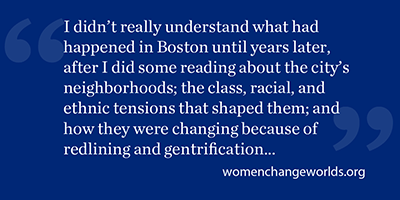 How did this turnaround happen? I’m glad of it, but I don’t know. Some of the people I talked to theorized about a better-educated population, a two-term black president, more understanding and acceptance of LGBTQ people and other nonmainstream folk—and even the experience of the 1970s, from which at least some white people in Boston concluded that the anger, fear, and hatred that they directed toward people of color caused only misery and destruction—not only to others but even to themselves.
How did this turnaround happen? I’m glad of it, but I don’t know. Some of the people I talked to theorized about a better-educated population, a two-term black president, more understanding and acceptance of LGBTQ people and other nonmainstream folk—and even the experience of the 1970s, from which at least some white people in Boston concluded that the anger, fear, and hatred that they directed toward people of color caused only misery and destruction—not only to others but even to themselves.
Surely some of it has to do with demographic changes. Boston is no longer as white as it was in the 1970s, and its neighborhoods are not quite as segregated (although don’t get me wrong, they are segregated still). People with wildly different backgrounds, cultures, and values have more day-to-day interaction—at work, on their block, in stores, on the T. Crime is down. Art, music, literary, and cultural events are not confined to Symphony Hall and the Museum of Fine Arts and the Hatch Shell on the Fourth of July—there are happenings throughout the neighborhoods that draw people out into the open, to enjoy them together.
Yet Boston remains a city of enormous economic inequality, institutional racism, struggling schools, and expensive housing and mass transit. The old fault lines could easily re-open, as people compete for scarce resources. After the march, some—cynics? realists?—said, “Nice turnout—now what?” For August 19 to be meaningful, we have to keep it going. For some of us, the protest was just one of a life-long series of actions, while for others it was a first. For all of us—certainly for me—it is an inspiration to keep marching in a positive direction, by remaining engaged and active, by working for justice and peace.
A writer, editor, and community activist, Amy Hoffman, M.F.A., is the editor-in-chief of Women’s Review of Books, published by the Wellesley Centers for Women and Old City Publishing. Her most recent book is The Off Season, a novel, forthcoming from the University of Wisconsin Press.


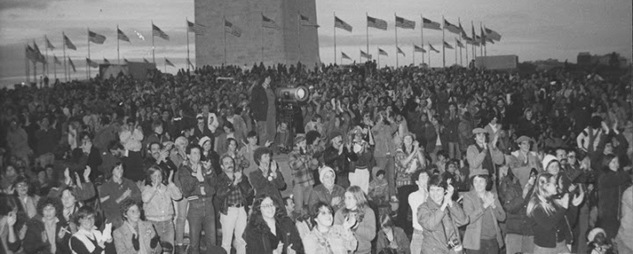
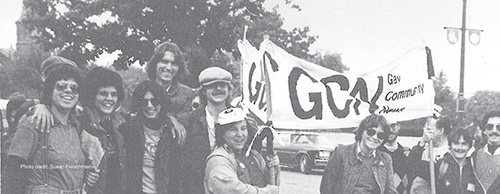 Thirty-six years later, the social status of LGBT people has changed enormously. Few LGBT people in Montana, say, would worry that a march in Washington, DC, would cause them to be set upon by an angry mob. In liberal Massachusetts, my employer, my neighbors, and my doctor all know I’m a lesbian. I’ve been married to my partner of 27 years since 2003—and my entire family came to our wedding. Since the Supreme Court’s Obergefell decision in June, my marriage is recognized by the federal government as well as that of my state. I can watch many television shows and movies in which LGBT characters make it through the entire plot without killing themselves. I can kiss my wife goodbye on the front steps when I leave for work in the morning without worrying (too much) that we’ll be beaten or shot.
Thirty-six years later, the social status of LGBT people has changed enormously. Few LGBT people in Montana, say, would worry that a march in Washington, DC, would cause them to be set upon by an angry mob. In liberal Massachusetts, my employer, my neighbors, and my doctor all know I’m a lesbian. I’ve been married to my partner of 27 years since 2003—and my entire family came to our wedding. Since the Supreme Court’s Obergefell decision in June, my marriage is recognized by the federal government as well as that of my state. I can watch many television shows and movies in which LGBT characters make it through the entire plot without killing themselves. I can kiss my wife goodbye on the front steps when I leave for work in the morning without worrying (too much) that we’ll be beaten or shot.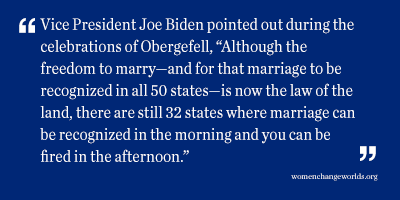 Still, as
Still, as 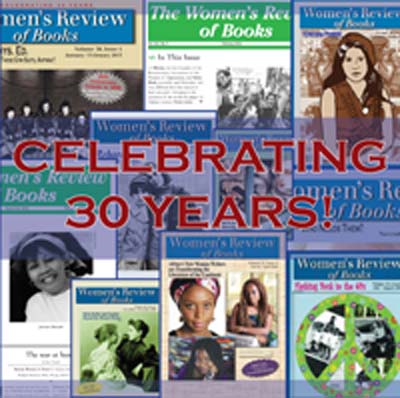
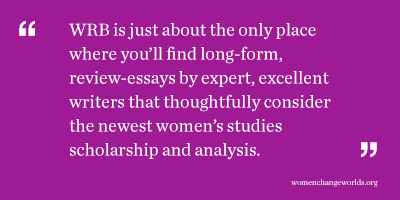 publication because we had, basically, run out of money, WCW partnered with
publication because we had, basically, run out of money, WCW partnered with 